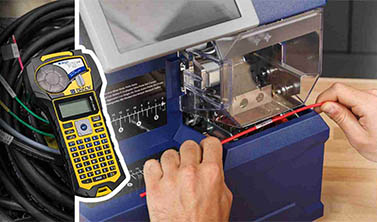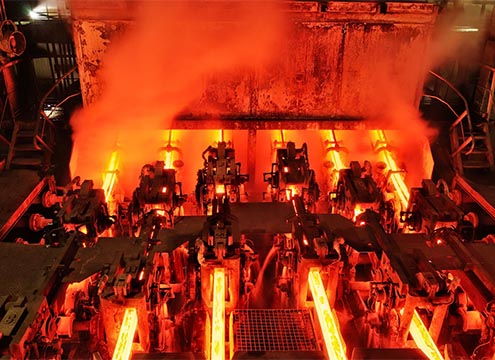The efficient and safe operation of new energy vehicles is inseparable from the design optimization of high-voltage wire harnesses and connectors. These components are the core of the power transmission system and play a vital role in vehicle performance and safety. This study discusses in detail the design principles of high-voltage wire harnesses for new energy vehicles, emphasizing the optimization of wire harness layout, the importance of material selection, and the sophistication of manufacturing processes. At the same time, the performance standards and type characteristics of the connectors are analyzed to improve the efficiency and reliability of power transmission.
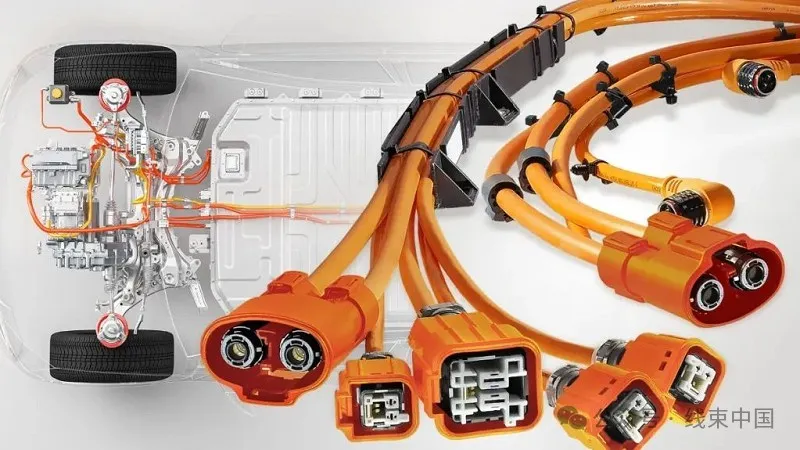
As a medium connecting high-voltage power supply and various components, high-voltage wire harness is not only responsible for the transmission of electric energy, but also plays a role in shielding external signal interference. It has the ability to withstand high voltage and high current, and has high protection level and anti-electromagnetic interference characteristics. These characteristics make high-voltage wire harness an indispensable neural network for the power system of new energy vehicles, which is crucial to the performance and safety of the whole vehicle. Therefore, in-depth research and optimization of the design of high-voltage wire harness and connectors for new energy vehicles is of great significance to improving the overall performance and safety of the vehicle.
Key analysis of high voltage wiring harness design and connector selection
In the energy system of new energy vehicles, batteries are the core power source, and their energy storage capacity is limited. Therefore, optimizing the power transmission process to reduce energy loss is crucial to improving energy utilization and extending vehicle range. To achieve this goal, the material selection and design layout of the high-voltage wiring harness must meet the requirements of high conductivity, low resistance, and low heat loss. In addition, considering that the power demand of new energy vehicles fluctuates with different driving conditions during driving, the design of the high-voltage wiring harness should be able to stably adapt to such fluctuations to ensure continuous and stable power supply to motors and other power-consuming devices.
The design of high-voltage wiring harnesses focuses on their excellent insulation performance, which is designed to effectively prevent current leakage. During the design phase, the insulation materials of the wiring harnesses were carefully screened to ensure that they can withstand the operating voltage of new energy vehicles for a long time, which is usually more than 400 volts. The voltage-resistant design of the wiring harness is the core of its reliability, ensuring that even under extreme conditions, it will not cause failures due to excessive voltage, thereby maintaining the safety of the vehicle and passengers.
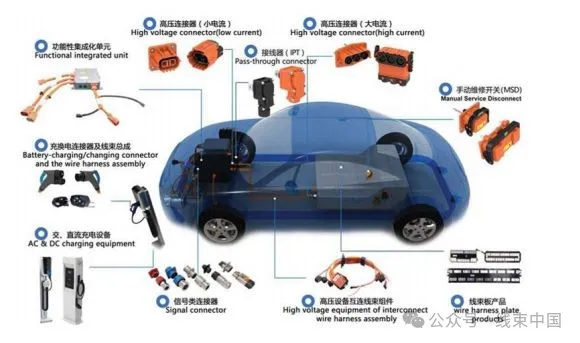
In the energy system of new energy vehicles, batteries are the core power source, and their energy storage capacity is limited. Therefore, optimizing the power transmission process to reduce energy loss is crucial to improving energy utilization and extending vehicle range. To achieve this goal, the material selection and design layout of the high-voltage wiring harness must meet the requirements of high conductivity, low resistance, and low heat loss. In addition, considering that the power demand of new energy vehicles fluctuates with different driving conditions during driving, the design of the high-voltage wiring harness should be able to stably adapt to such fluctuations to ensure continuous and stable power supply to motors and other power-consuming devices.
The design of high-voltage wiring harnesses focuses on their excellent insulation performance, which is designed to effectively prevent current leakage. During the design phase, the insulation materials of the wiring harnesses were carefully screened to ensure that they can withstand the operating voltage of new energy vehicles for a long time, which is usually more than 400 volts. The voltage-resistant design of the wiring harness is the core of its reliability, ensuring that even under extreme conditions, it will not cause failures due to excessive voltage, thereby maintaining the safety of the vehicle and passengers.
High voltage wiring harness design for new energy vehicles
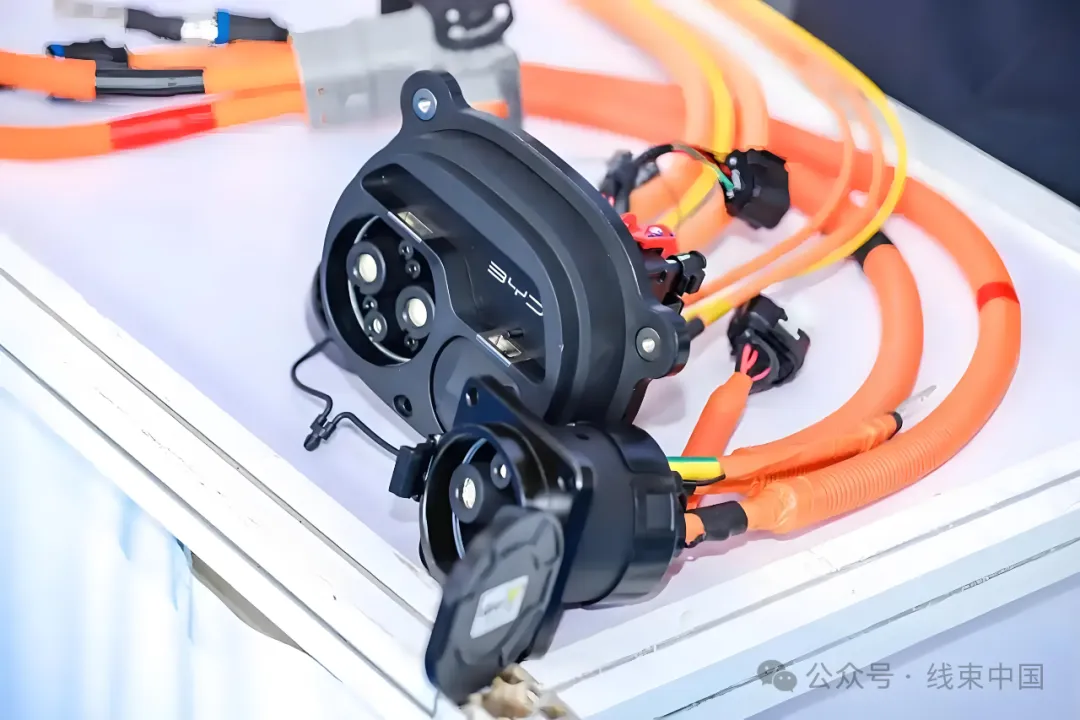
1. High voltage wiring harness design
01 Design Direction This design scheme aims at the needs of new energy vehicles and provides a solution that meets the high efficiency and high safety of high-voltage wiring harnesses. The scheme successfully achieves lightweight and efficient transmission of high-voltage wiring harnesses by optimizing wiring harness layout, selecting suitable materials, and adopting advanced manufacturing processes.
02 Wire harness layout design In the layout of the chassis structure of new energy vehicles, the direction of the high-voltage wire harness must be carefully designed to ensure that its length is moderate, neither too long nor too short. This design is intended to minimize the impact of vibration and friction on the wire harness during vehicle operation. By using specialized wire harness fixtures, such as clamps and brackets, the stability and safety of the wire harness during vehicle driving can be ensured to prevent it from loosening or falling off. In addition, for parts of the wire harness that are susceptible to wear or may be affected by the external environment, it is recommended to add protective covers to reduce the risk of damage, thereby improving the service life and reliability of the entire wire harness system.
03 Select materials When selecting wire materials, give priority to options with high conductivity, heat resistance and corrosion resistance, such as high-temperature superconducting materials or special alloy wires, to ensure performance stability in extreme environments such as high temperature and high humidity. The selection of insulating materials should focus on high performance, such as polyimide (PI) or polytetrafluoroethylene (PTFE), which can provide excellent electrical insulation performance. As for connectors, it is recommended to use metal materials with high strength and high conductivity, such as copper alloy or stainless steel, to ensure that the connector can maintain good contact performance even during long-term use.
04 Manufacturing process The high-voltage wire harness is manufactured using automated production technology to improve production efficiency and ensure product quality. Precision crimping equipment is used to achieve reliable connection between the wire and the connector, effectively reducing the temperature rise problem of contact resistance. The production process strictly implements quality inspection, involving multiple tests such as wire resistance and connector insertion and extraction force, to ensure that the performance of the high-voltage wire harness fully meets the established design standards.
05 Safety Design In the high-voltage harness system, overcurrent protection devices such as fuses or circuit breakers should be configured to prevent harness damage caused by excessive current. In addition, it is necessary to ensure that the high-voltage harness is effectively isolated from the low-voltage harness and control harness to reduce electromagnetic interference and the potential safety risks it brings. When designing the grounding system, its rationality should be ensured so that the high-voltage harness can be reliably grounded, thereby reducing the risk of electromagnetic interference and static electricity accumulation.
2. Design and layout of high voltage wiring harness
The design of high-voltage harness layout must meet several basic specifications, including safety assurance, system reliability, cost-effectiveness, and easy maintenance. Ensuring safety requires keeping the harness away from heat sources and dynamic components to avoid the risk of fire caused by damage. System reliability requires ensuring that the harness connection is stable and can withstand environmental factors such as vibration, temperature changes, and humidity. While meeting performance standards, economic considerations drive designers to reduce the length and material usage of the harness to reduce overall costs. Finally, for easy maintenance, the harness layout should be kept neat and orderly, and clearly marked to facilitate inspection and replacement.
3. Manufacturing process and material selection of high voltage wiring harness
01 Manufacturing process The process of manufacturing wires involves multiple steps: first, the metal material is stretched into a single wire of a specified diameter through a wire drawing machine; then it is annealed to increase its flexibility; and then multiple single wires are twisted into a strand to enhance its mechanical strength. The insulation process involves wrapping the insulating material around the outside of the wire, using an extruder to ensure that the material is evenly distributed, and cooling and solidifying to form a solid insulation layer. The manufacturing of the shielding layer is to tightly wrap materials such as metal braided mesh or aluminum foil around the outside of the insulation layer. This step requires close contact between the shielding material and the wire to effectively reduce electromagnetic interference. Connectors are installed at both ends of the high-voltage wire harness to connect to other electrical systems of the vehicle. The manufacture of the connector relies on precision machining and injection molding technology, which can ensure its accuracy. During the assembly process, it is necessary to ensure that the contact between the wire and the connector is close and seamless, thereby reducing contact resistance and improving conductivity.
02 Material selection
Wire material: The high-voltage wiring harness design of new energy vehicles uses high-purity copper or aluminum as the main conductive material to meet the needs of high current and high voltage transmission. Copper wires are widely used due to their excellent conductivity and mechanical strength, while in some specific applications, lightweight and low-cost aluminum wires also show their advantages. In order to ensure the safe use of high-voltage wire harnesses, the outer layer of the wire is wrapped with insulating materials. These insulating materials mainly include cross-linked polyethylene (XLPE), polyvinyl chloride (PVC) and ethylene propylene rubber (EPR). In the application of new energy vehicles, cross-linked polyethylene is particularly valued for its excellent electrical properties and heat resistance.
Shielding materials: In automotive manufacturing, in order to reduce the negative impact of electromagnetic interference (EMI) on vehicle electronic systems, high-voltage wiring harnesses are designed to use specific shielding materials. These materials can effectively absorb and block electromagnetic waves, thereby significantly reducing electromagnetic interference. Commonly used shielding materials include metal woven mesh, aluminum foil and conductive cloth, each of which contributes to minimizing electromagnetic interference in different ways and ensuring the stability and reliability of vehicle electronic systems.
Sheath material: The sheath is an important component of the high-voltage wire harness, and its main function is to protect the wire harness from the adverse effects of the external environment. In order to ensure its performance, the sheath should have a variety of characteristics, including weather resistance, abrasion resistance, oil resistance and flame retardancy. Common sheath materials on the market are mainly polyvinyl chloride (PVC), thermoplastic elastomer (TPE) and nylon. These materials have their own characteristics, but they are all designed to provide the necessary protection to maintain the normal operation of the high-voltage wire harness.
Connector Selection Analysis
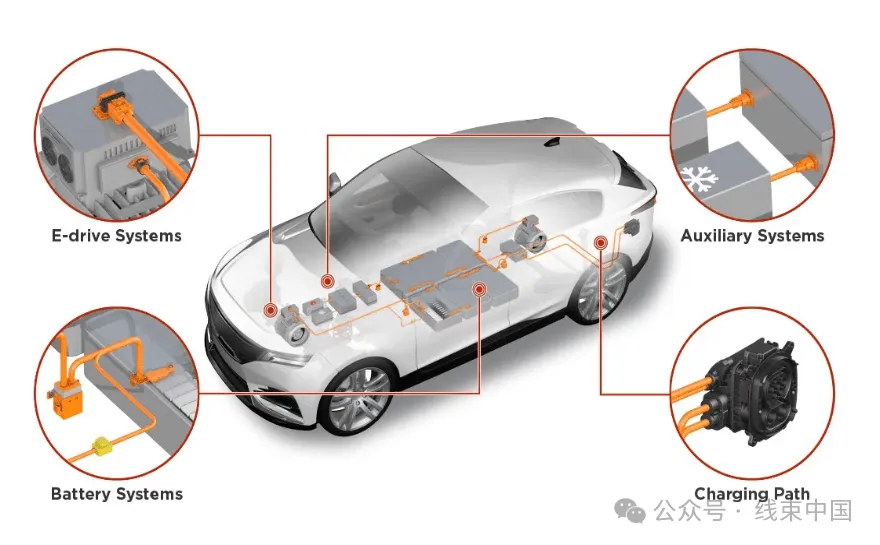
1. Performance requirements of connectors
01 Electrical performance requirements
The design of connectors for new energy vehicles should meet specific electrical performance requirements to ensure safety and stability in high-voltage systems. First, considering the voltage requirements of new energy vehicles, the rated voltage of the connector must be set above 200V. Secondly, insulation resistance is a key criterion for evaluating whether the connector can avoid leakage or short circuit under high voltage, and its value should meet industry standards, such as not less than 100 MΩ. In addition, the voltage resistance of the connector is also an important consideration. It should be able to withstand a voltage of at least 1000V to ensure the safety of application in the high-voltage system of new energy vehicles.
02 Mechanical performance requirements
The plugging and unplugging force is a key indicator for evaluating the ease of operation of connectors. Its design must ensure that it is easy to plug and unplug while avoiding excessive looseness. Generally, the plugging and unplugging force should be controlled within 100 N. In addition, the mechanical durability of the connector is defined as the number of times it can be repeatedly plugged and unplugged without losing stability and reliability, which should ideally exceed 50 times. Since new energy vehicles may encounter vibrations during operation, connectors must have excellent vibration resistance to ensure that their electrical and mechanical properties are not affected at the specified vibration frequency and amplitude.
03 Temperature adaptability requirements
The temperature adaptability requirements of connectors are very strict, and they need to maintain normal operation in a wide temperature range of -40°C to 125°C. This means that at any temperature within this range, its electrical and mechanical properties must remain stable without degradation or failure. This standard ensures the reliability and efficiency of connectors under various extreme environmental conditions.
04 Anti-corrosion performance requirements
The choice of connector material is related to its anti-corrosion performance. The shell should preferably be made of metal materials with excellent corrosion resistance, such as aluminum or zinc alloy, and the surface can be sandblasted. The contact part is made of copper, and gold plating, silver plating, nickel plating and other processes are used to improve its conductivity while meeting the anti-corrosion requirements. The connector should have good sealing performance to prevent the intrusion of harmful substances such as moisture and dust, and effectively avoid corrosion. The sealing structure should be well designed during the design to ensure that the sealing effect is maintained in various harsh environments. A layer of anti-corrosion coating can be applied to the surface of the connector to enhance its anti-corrosion performance and ensure that the connector is tightly plugged in and not easy to loosen. Special sealing packages can be used to ensure that the connection is not corroded by moisture and corrosive substances. Regular maintenance and inspection of the connector is an important measure to ensure its long-term anti-corrosion performance.
2. Types and characteristics of connectors
01 Main types of connectors
LV standard plug-in: LV standard plug-in enjoys wide circulation in the domestic market. Its process standards have been strictly optimized and show excellent perfection. This plug-in can meet various electrical connection requirements and shows its excellent universal performance. It is widely used in the connection of key components of new energy vehicles, such as battery packs and motor controllers, ensuring the stable and reliable operation of these key components.
USCAR Standard Plug-in: As an internationally certified interface device, the USCAR standard plug-in is recognized for its excellent compatibility and reliability. It is designed to meet the strict specifications of the automotive industry and ensure stable operation under extreme conditions. This plug-in is widely used by internationally renowned new energy vehicle brands to meet the diverse needs of the global market.
Japanese standard plug-in: The design of Japanese standard plug-in strictly follows Japanese standards, and its core features are refinement and high performance. These connectors are not only compact in size, but also excellent in electrical performance, ensuring the stability and reliability of the equipment during operation.
02 Common features of connectors
The efficient operation of new energy vehicles depends on the stable power transmission of their high-voltage systems, which requires connectors to be able to withstand high voltage and current shocks. When designing connectors, it is crucial to select appropriate insulating materials to prevent leakage and short circuit problems and ensure system safety. In addition, connectors must maintain stable electrical performance in high temperature environments to prevent temperature increases from affecting their functions. In order to facilitate maintenance and replacement, the design of connectors should also consider the requirements of easy installation and removal.
Summarize
The design of high-voltage wire harnesses and the selection of connectors for new energy vehicles are crucial to vehicle performance and safety. This article will analyze in detail the design points of high-voltage wire harnesses and the selection criteria for connectors, aiming to provide stable and efficient technical support for the electrical systems of new energy vehicles.

